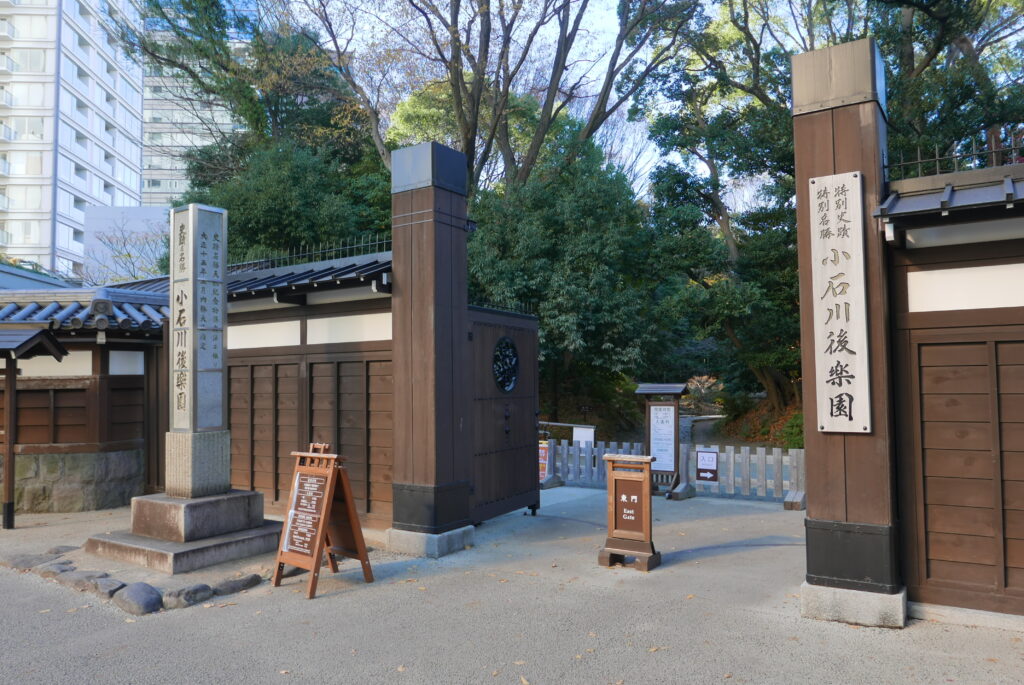
Winter has just come to Tokyo, and the temperature has started dropping to near zero degrees Celsius, or 32 degrees Fahrenheit, in the mornings. I visited Koishikawa-Korakuen Garden again to see some of the winter preparations and the atmosphere. Exploring the Japanese gardens in Tokyo every season has become my routine since I started my guide job. And this time, I chose to enter the Koishikawa-Korakuen Garden through the East Gate. According to Prof. Shirakawa, a gardening arts, techniques, and history expert, it was the main gate of Koishikawa-Korakuen, the house and garden of the Mito Tokugawas, a major and important family member of the Tokugawas, the shogun family.
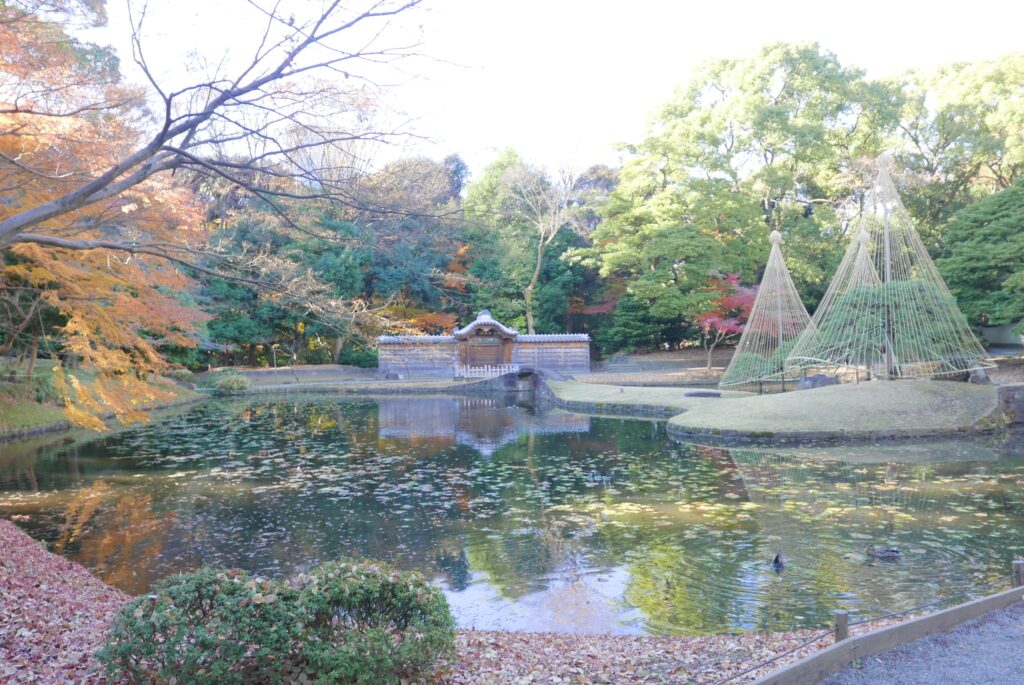
The first scene after the gate was a cozy garden with a small pond. There were residential houses and Shoin, a study and academic hall where Tokugawa Mitsukuni led the big project to edit a unique history book of Japan with Confucian scholars. There was the first history book of Japan, Nihon Shoki, which included a lot of myths and no clear evidence of the historical facts, so Mitsukuni launched the initiative to write a new history book of Japan based on the tremendous piles of documents he could garner. It must have been tough years for his team, so I can imagine they took a break, walked around the small pond, and refreshed themselves. They must have watched spot-billed ducks in the pond enjoying their lunch by picking up something under the water.
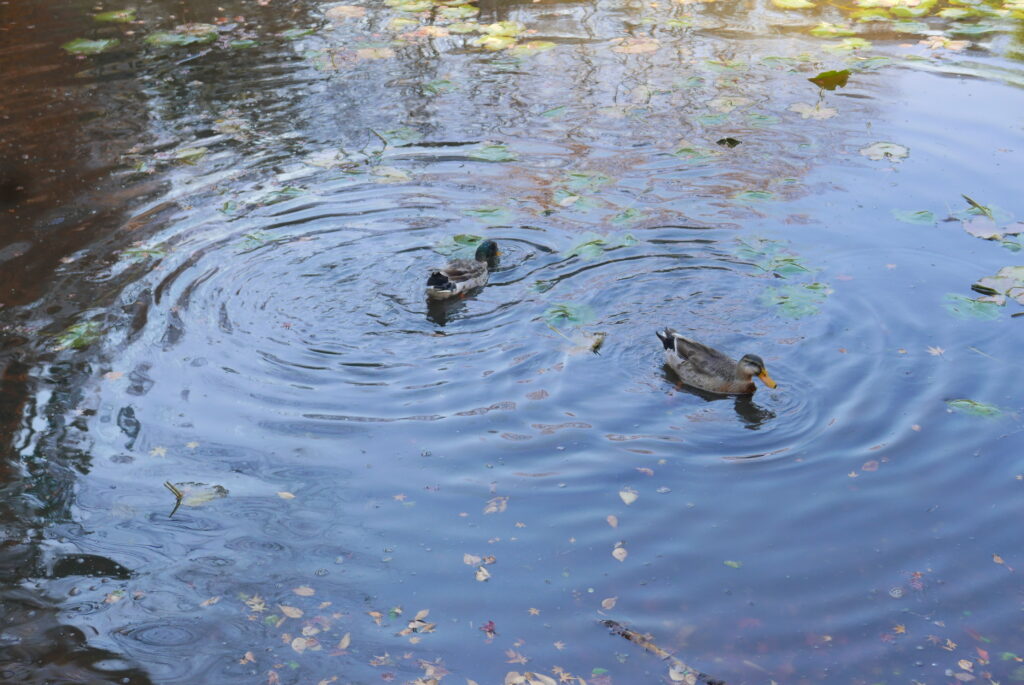
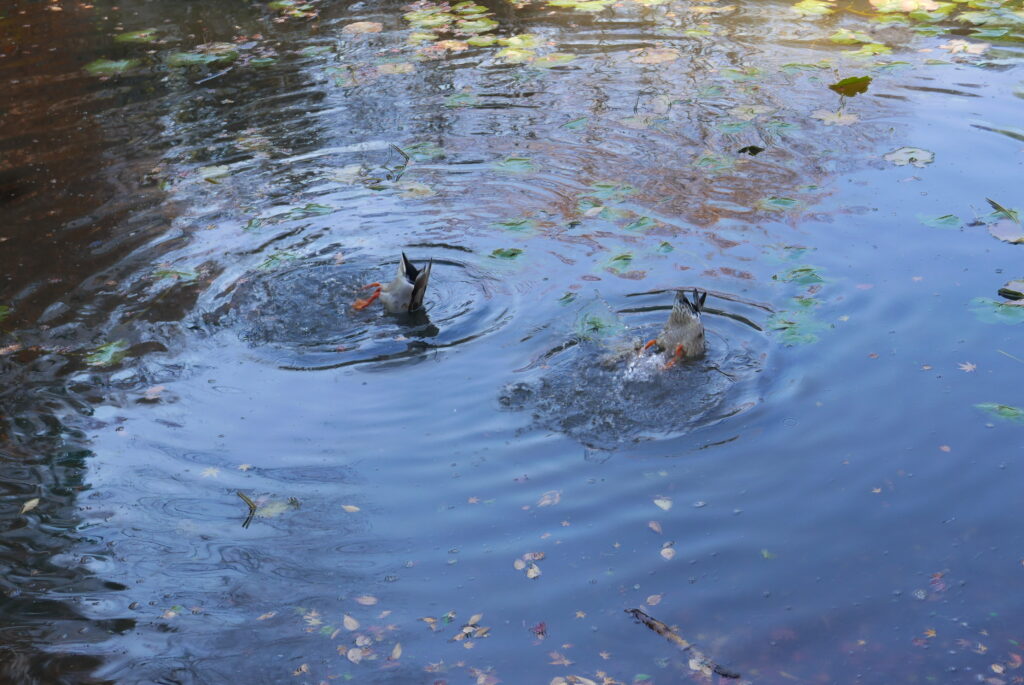
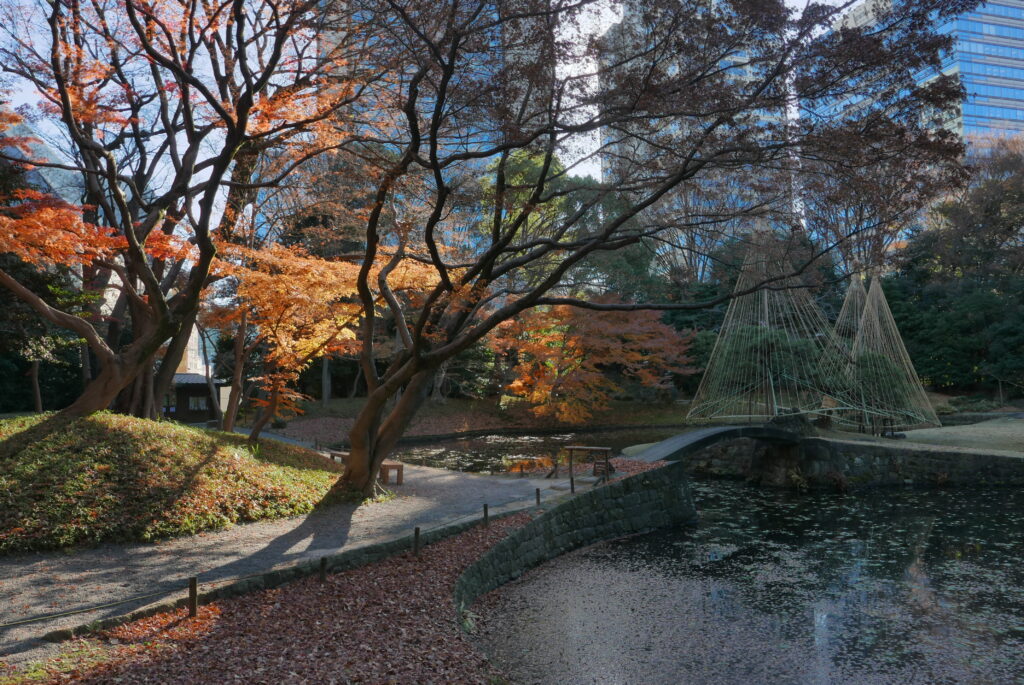
One of the remarkable characteristics of the Koisihikawa-Korakuen Garden is its features of Chinese culture and traditions in the garden. It’s because Mitsukuni invited Zhu Shunshui (Shu Shun-Sui in Japanese pronunciation), an exile from the Ming Dynasty, a country conquered by the Qing Dynasty and fell in 1644, as his mentor. One of the representative features is the Chinese Gate or Kara Mon, which hangs a plate saying “Korakuen,” which came from a latter part of the Chinese proverb, “People with dreams and aspirations should deeply consider the problems of the world before they happen, and they should also enjoy happiness only after the world enjoys it. ” Other Chinese tastes emerge later as the tour in the garden proceeds. So, I will tell you about them later.
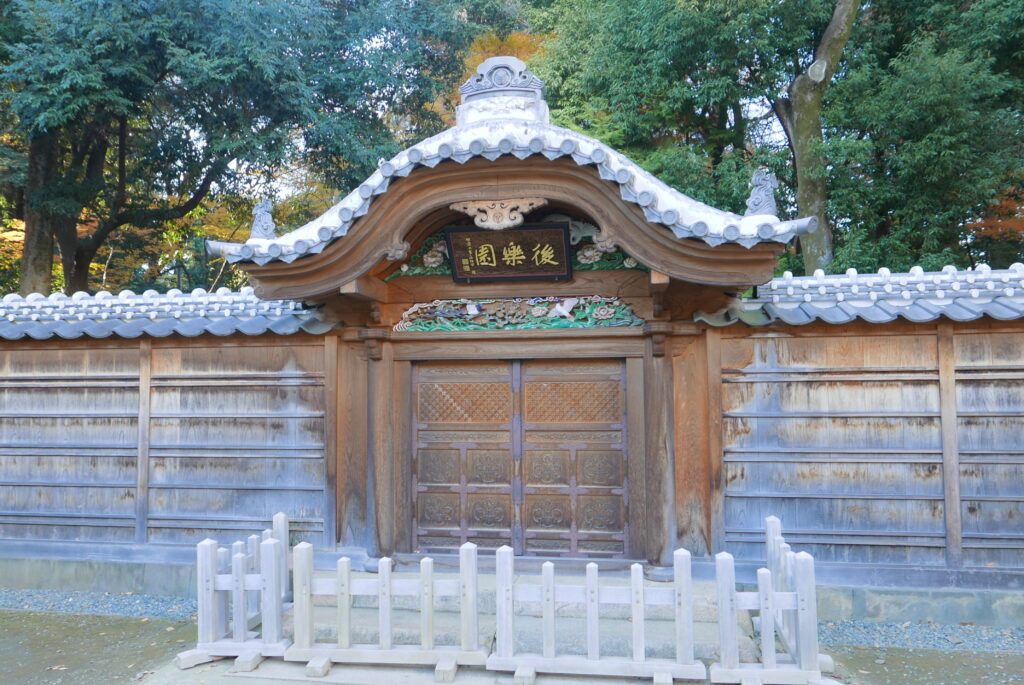
Behind the gate, a cobbled lane leads you to the deep mountain atmosphere. Behind the gate, a cobbled lane leads to the deep mountain atmosphere. This is a stage arrangement for the next scene, which allows visitors to imagine walking in the mountains, which also leads to a surprise at the next scene. This pavement resembles ancient Kiso-ji, part of the main road in the mountainous area between Tokyo and Kyoto, and just over the peak of the Kiso-ji, the creak along the road changes its name to Tatsutagawa, which flows in Nara prefecture just next to Kyoto. Then, after the Tatsutagawa River, the scene changes dramatically.
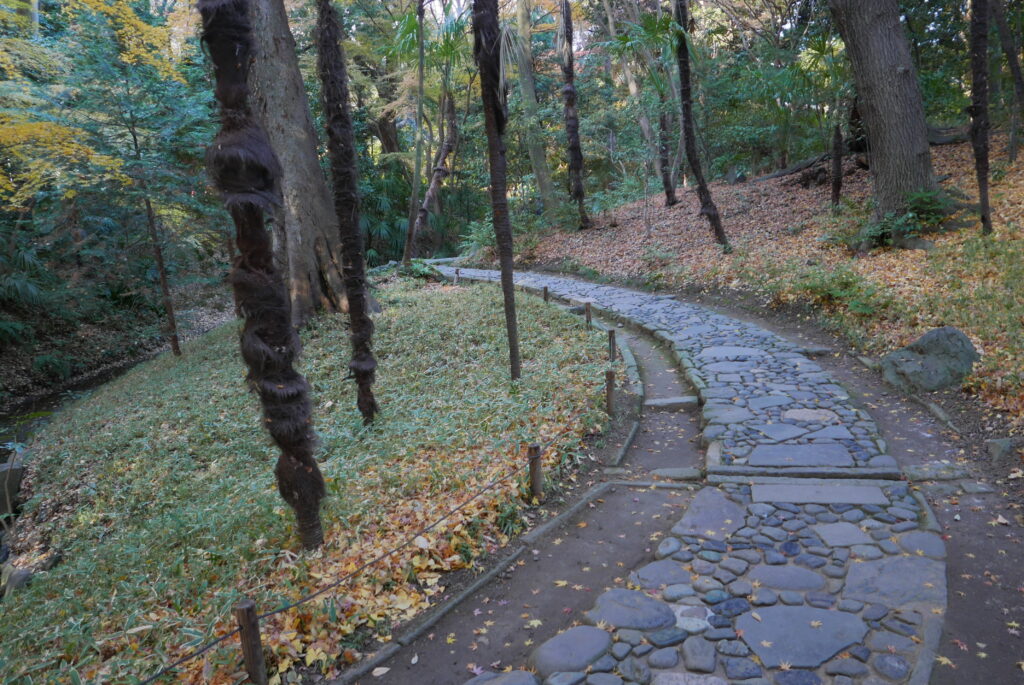
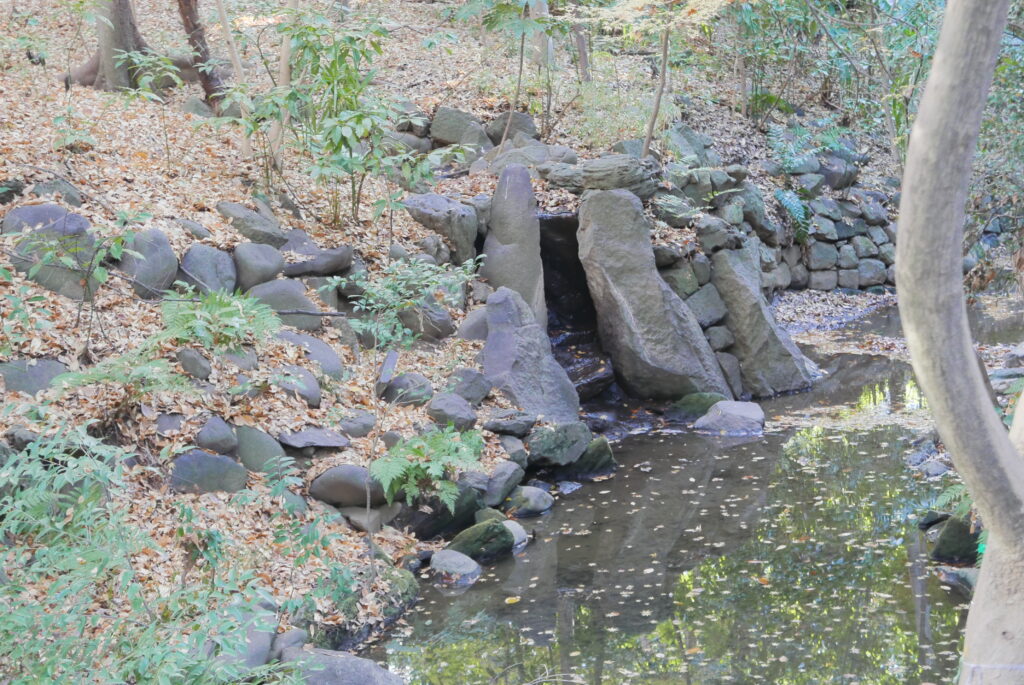
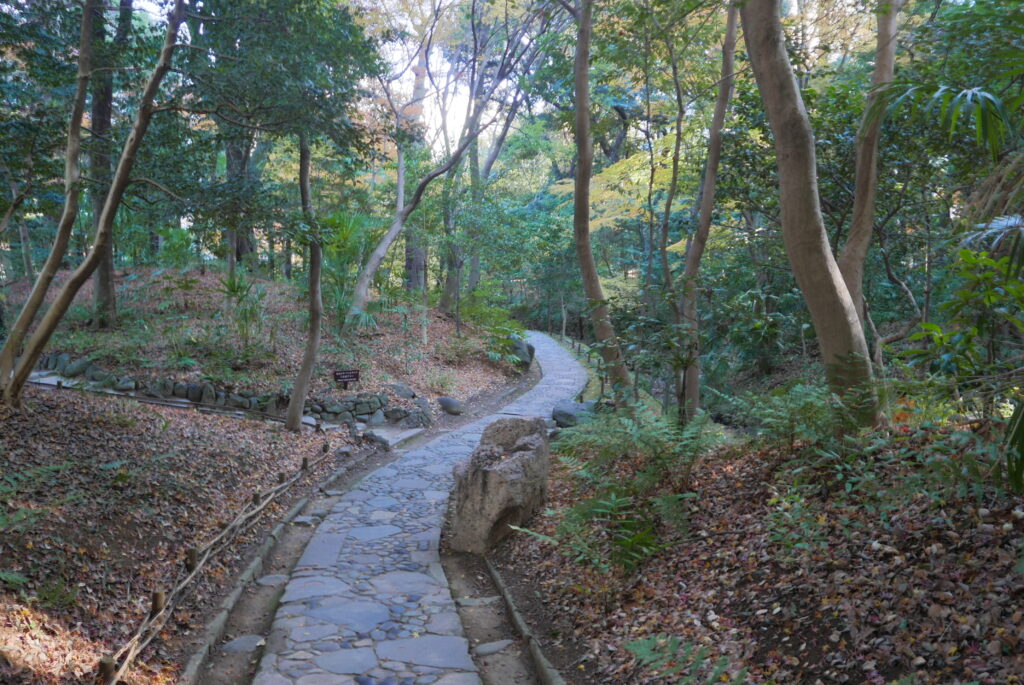
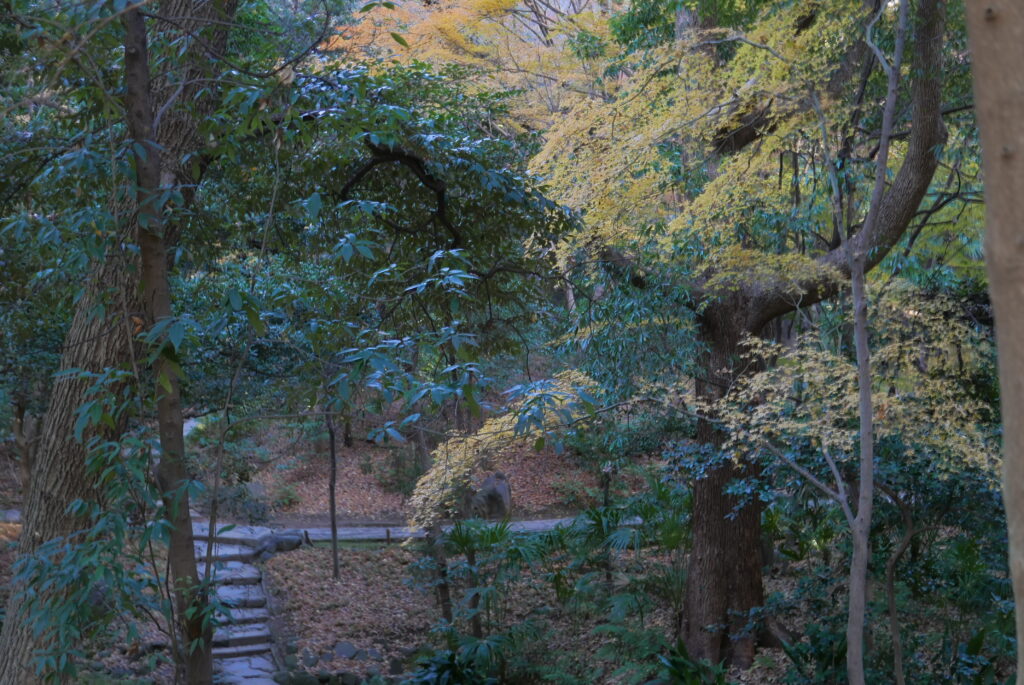
Suddenly, the shining garden and pond, Daisensui, appeared before my eyes at the end of the cobbled path in the forest. I guessed it was designed to surprise the visitors, which the garden designer had intended. I also felt pleased to naturally switch my mood from immersing myself in the calm vibes of the forest to cheering my mind up to enjoy the garden. In the center of the Daisensui, a pine tree equipped with a winter supportive arrangement, Yukitsuri, standing on the island, welcomed me. Yukitsuri is one of the remarkable winter scenes in the traditional Japanese gardens, which helps pin tree branches to withstand heavy snow weight during winter using straw ropes and bamboo. As an aside, I think Yukitsuri resembles the Christmas trees everywhere in Japan in November and December.
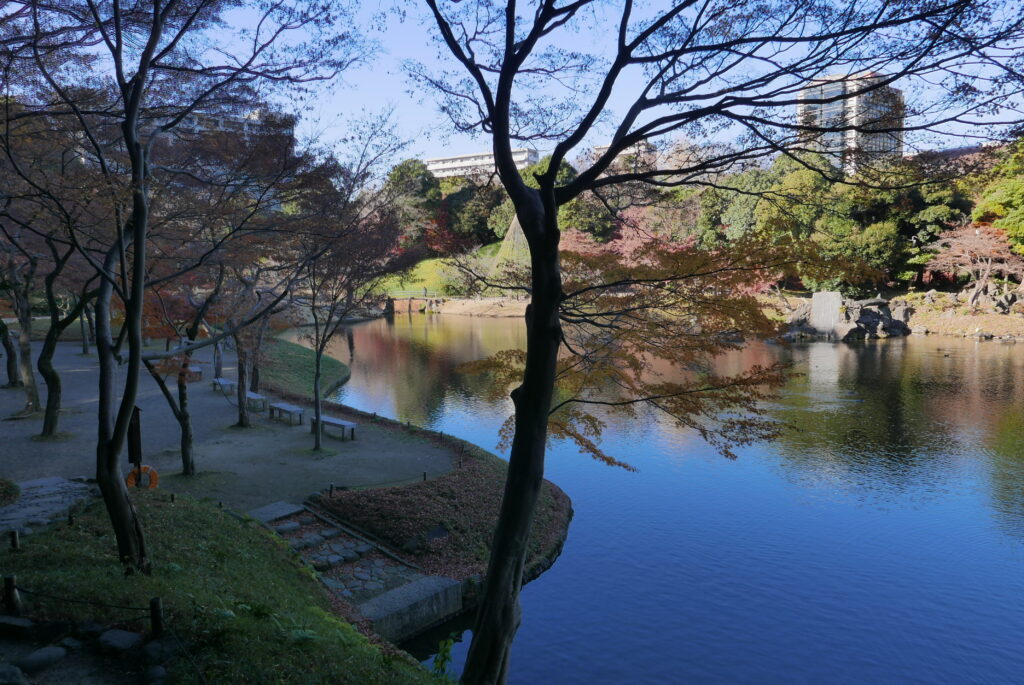
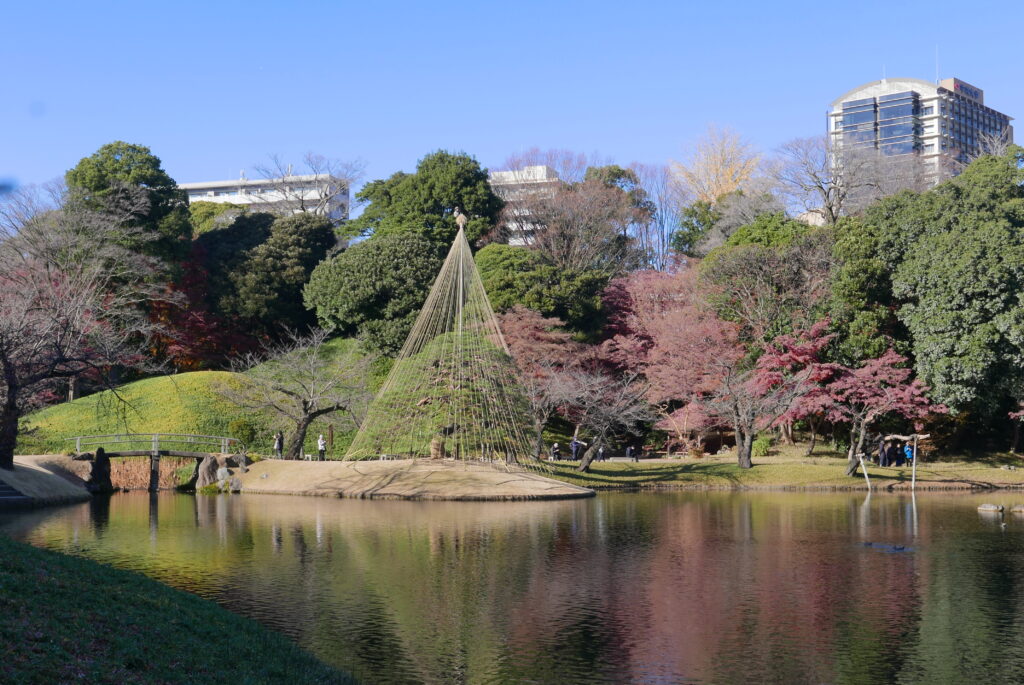
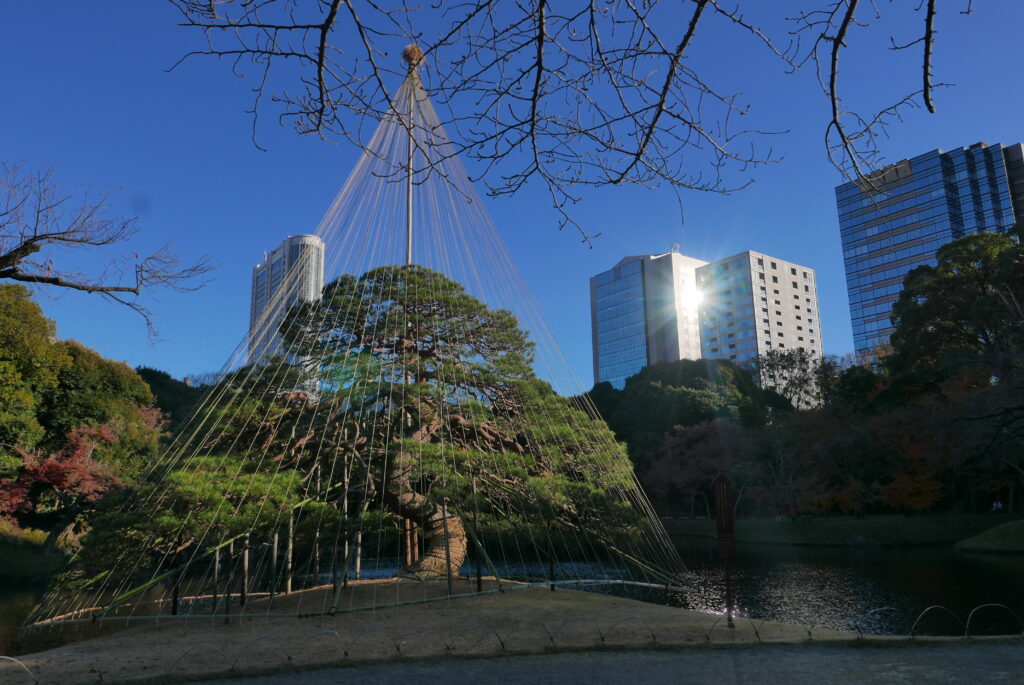
Walking on the up-and-down path in the forest zone made me slightly tired, so I took a short break at Kantoku-Tei, a cafe restaurant near the west gate. It always serves a bowl of match green tea with a seasonal traditional Japanese sweet, Wagashi. The Wagashi of the month was Yuzu sweet, which is a native Japanese citrus also used in a variety of Japanese cuisine. The aroma of Yuzu is refreshing but so gentle that I used to drink Yuzu Yu, hot water with several tiny shreds of peels of Yuze outer skin and honey when I caught a cold in my boy’s days.
The scenery out of Kanyoutei’s window looks like a picture rimmed in a wooden frame, which makes it rather lovely than the same scene from the garden.

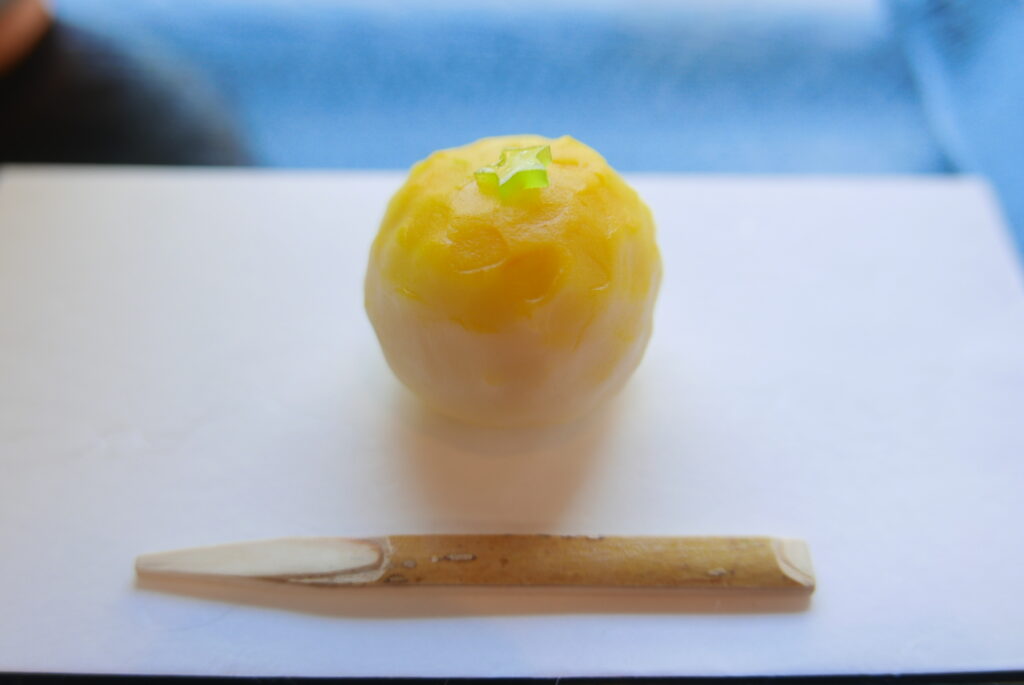
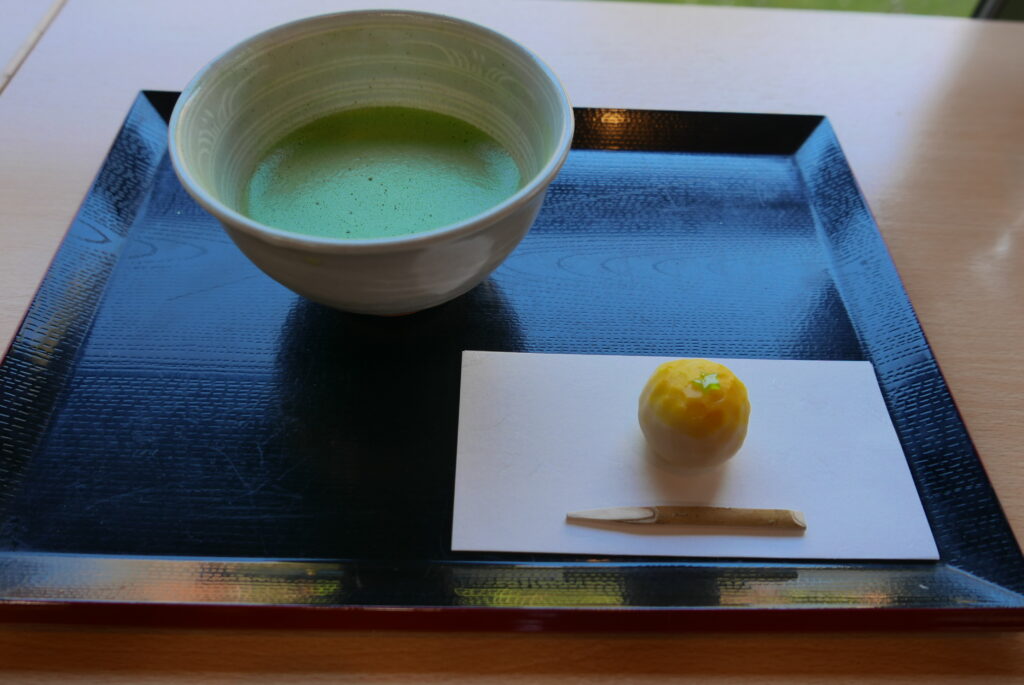
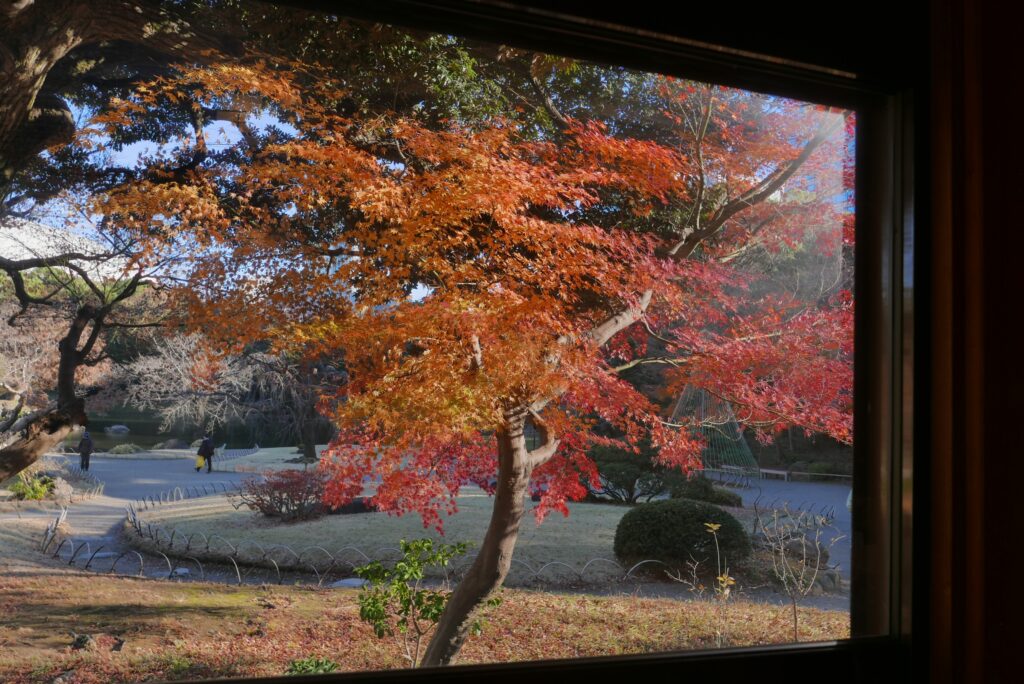
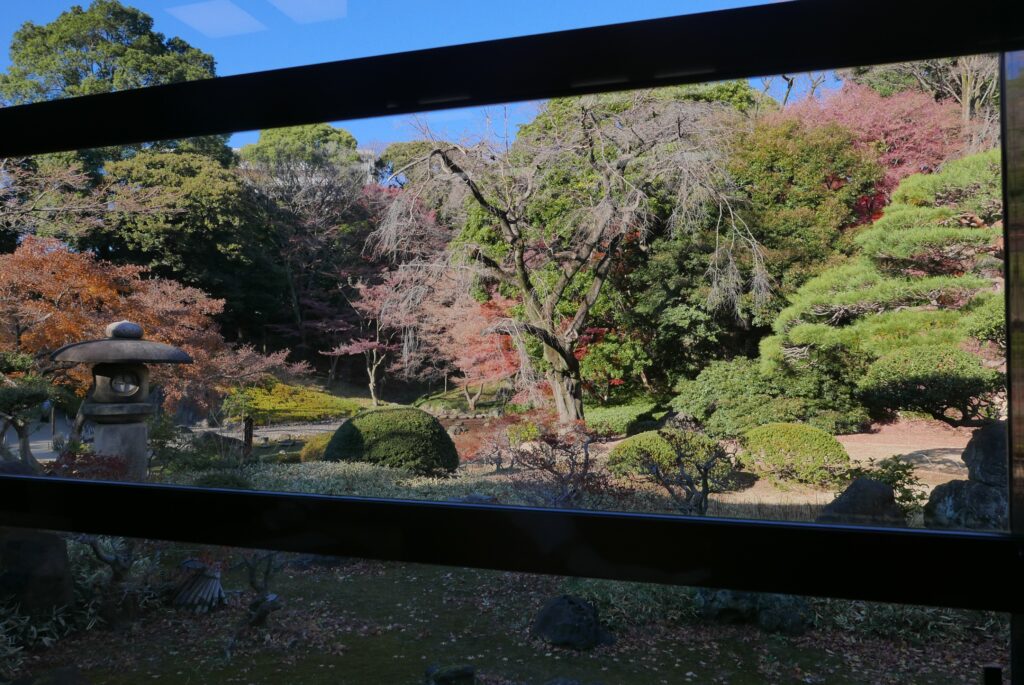
Just behind the Kantoku Tei, a miniature world of Kyoto and China was waiting for me and leading me to another aspect of the Koishikawa-Korakuen Garden.
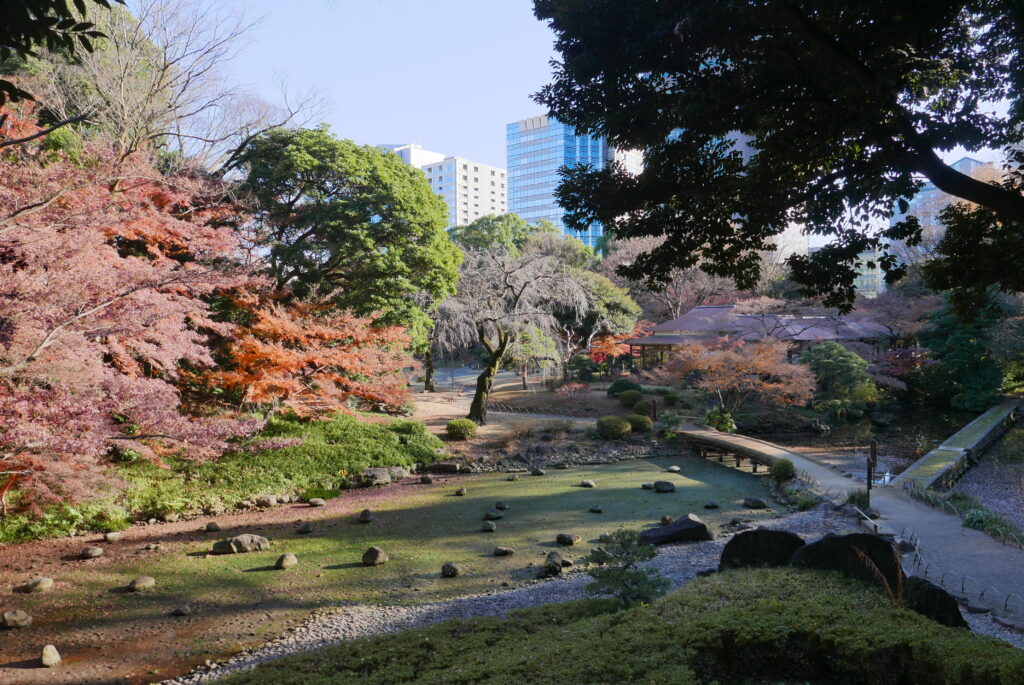
There was a cobbled area that pretended to be the Oigawa River flowing in the Kyoto suburb and a bridge over the river called Togetukyo. Both are famous sites in the Kyoto area. On the other side was a Chinese-style bridge, Saiko-No-Tsutsumi, which resembles the actual causeway, Su Causeway, in Hangzhou, China. These represent the garden owner’s strong desire and admiration for Kyoto and China because Kyoto was an ancient capital where the emperor resided during the samurai era. Then, China was a resource of state-of-the-art technology and knowledge.
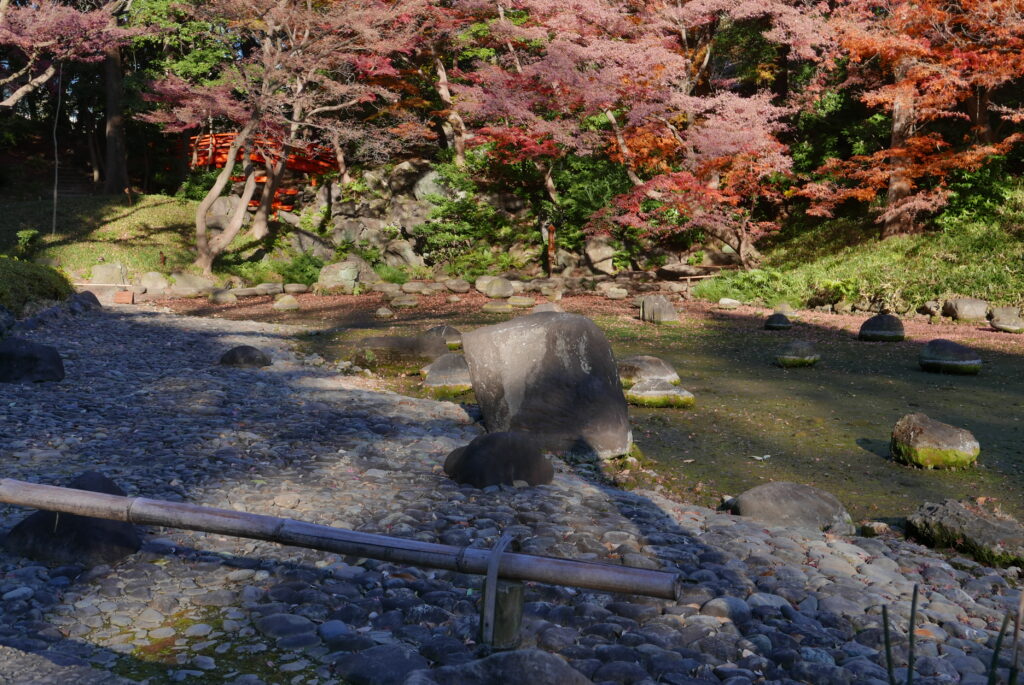
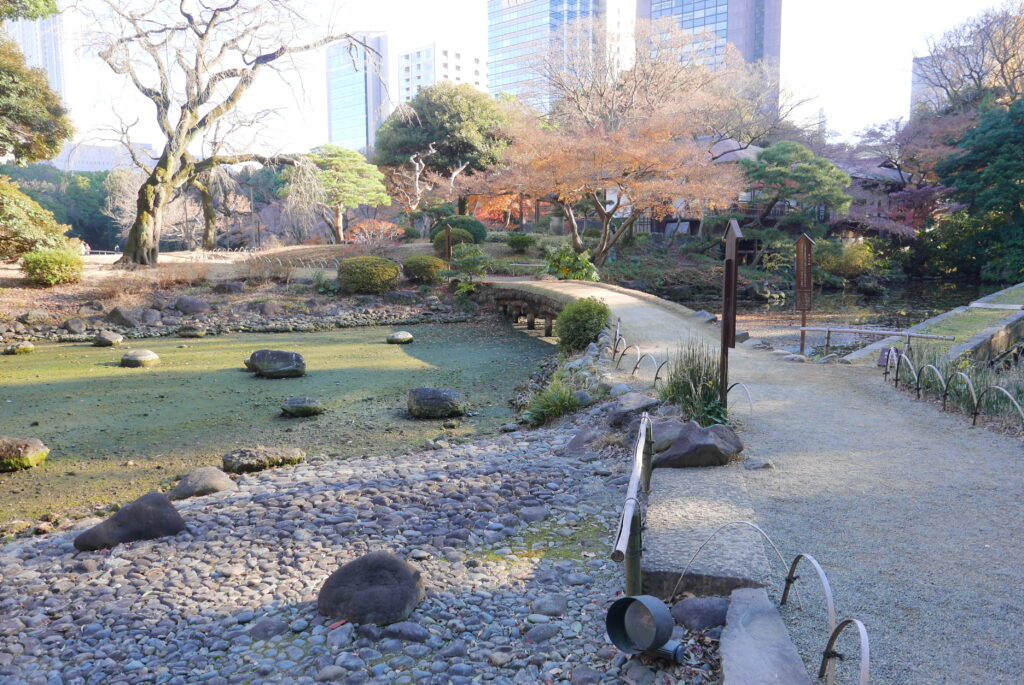
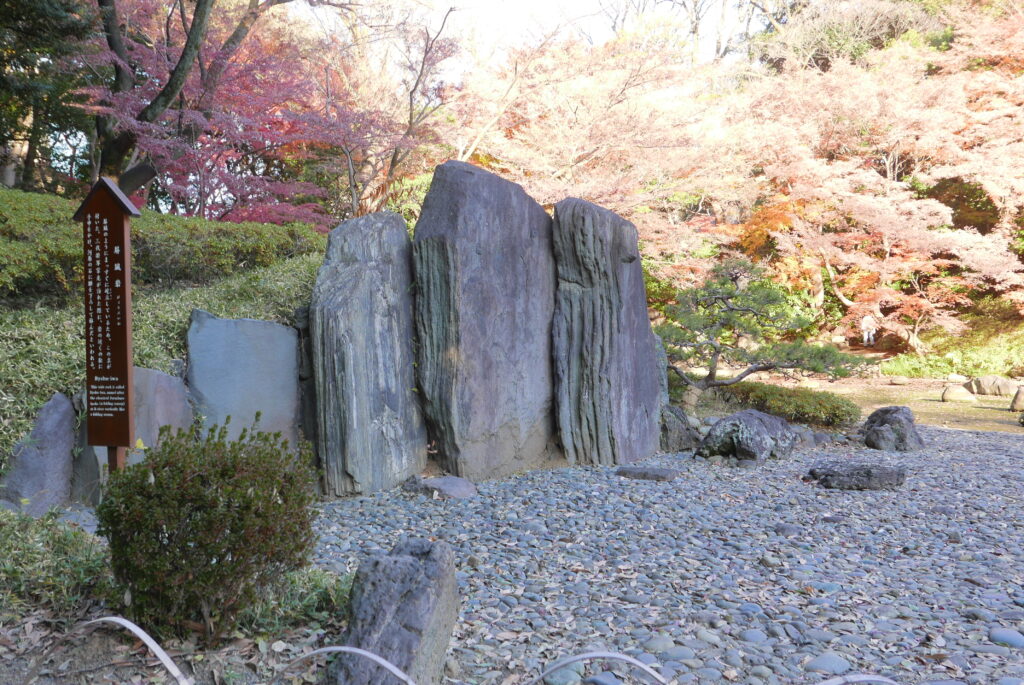
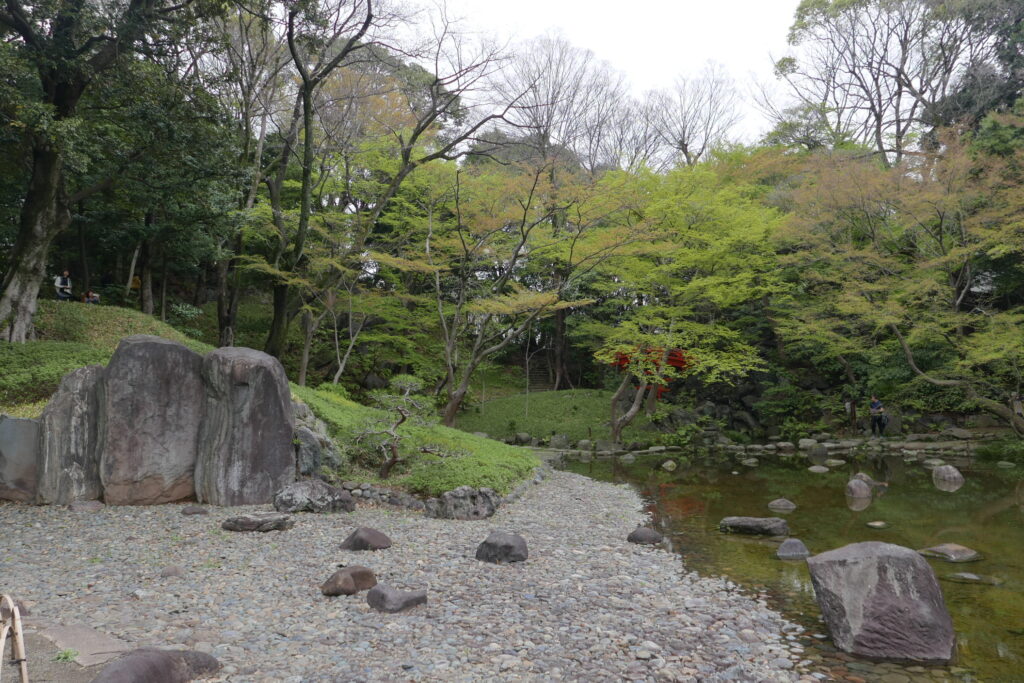
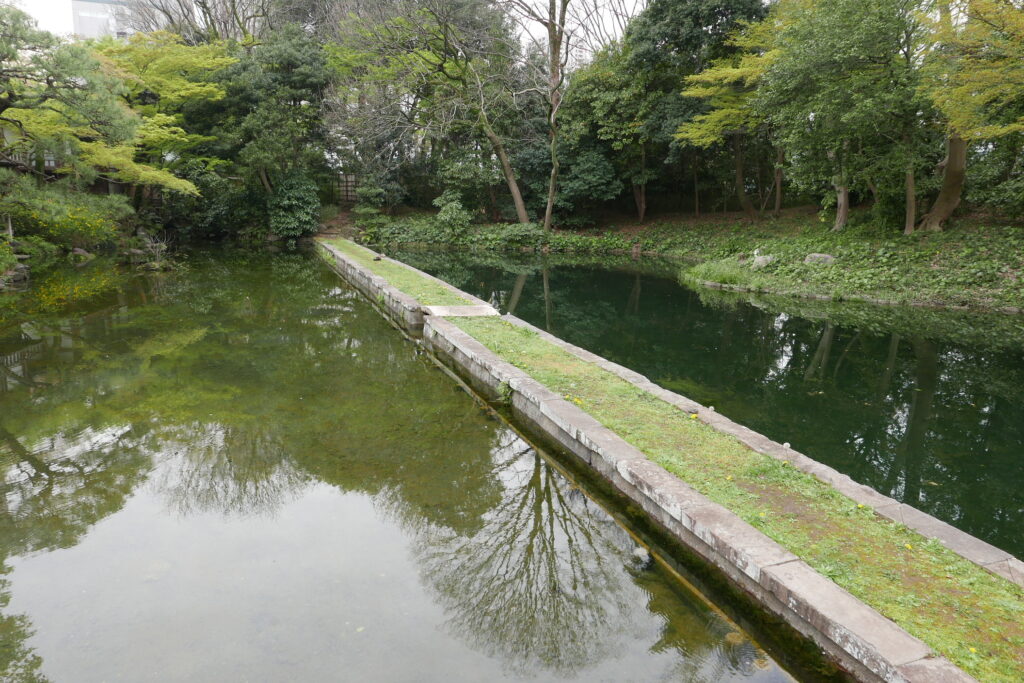
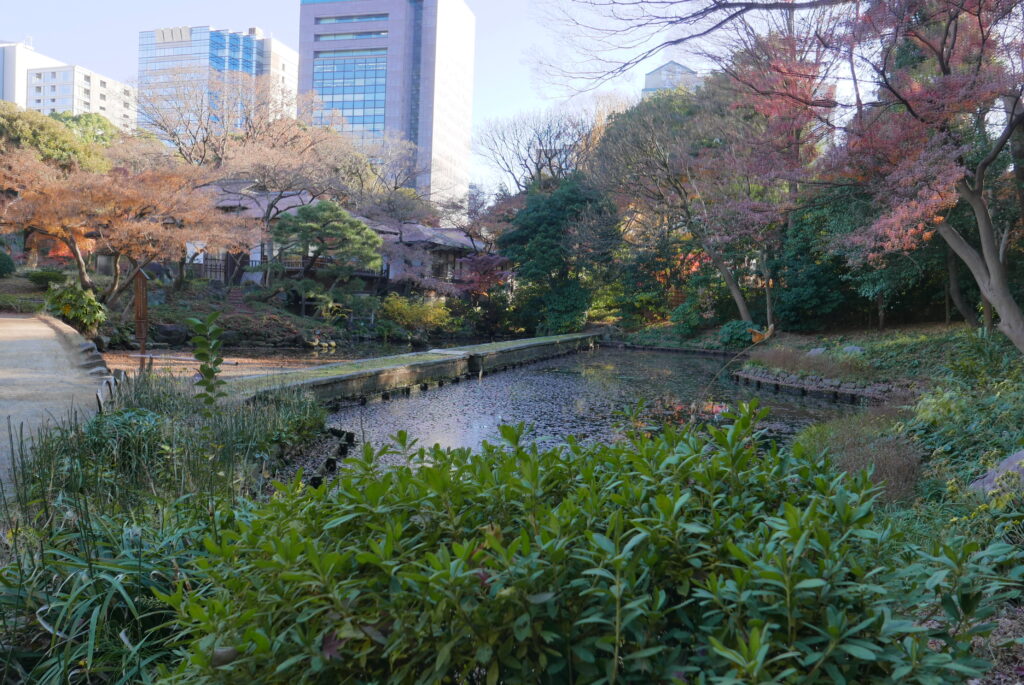
In the deep forest on the hill behind the Oigawa River, a red bridge, Tsu-Ten-Kyo, was shined in the bright afternoon light, inspired by the actual bridge of Tofukuji Temple in Kyoto. Here, I felt another eager love for Kyoto by the Mito Tokugawas. This site is also very popular among brides and bribes to take their happy photos with traditional wedding costumes. They looked so pleased that I unintentionally made a big smile to them.
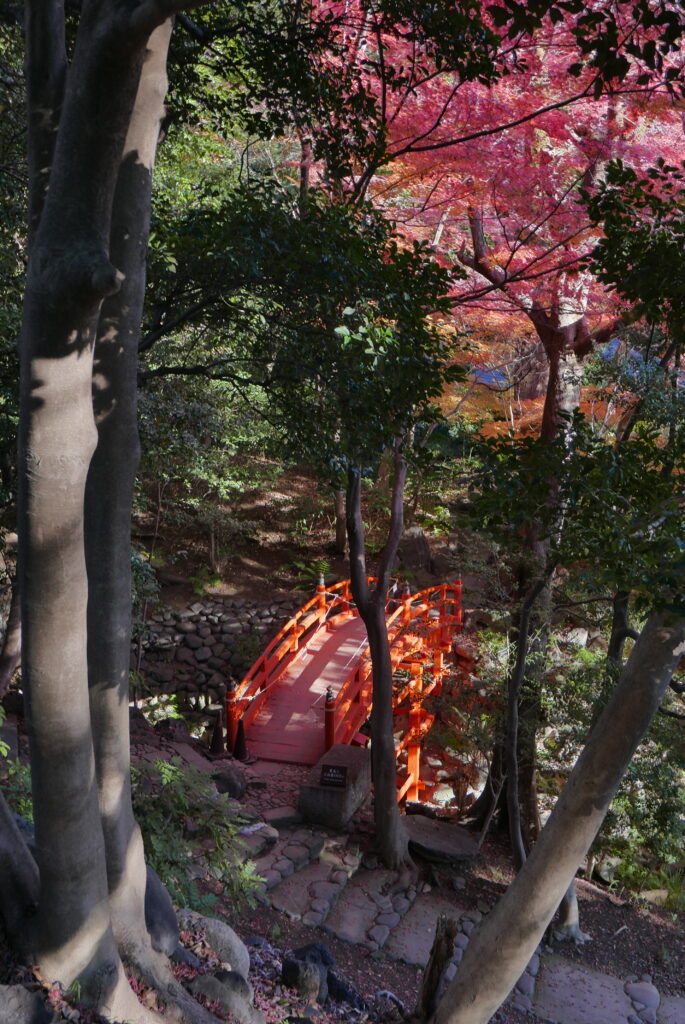
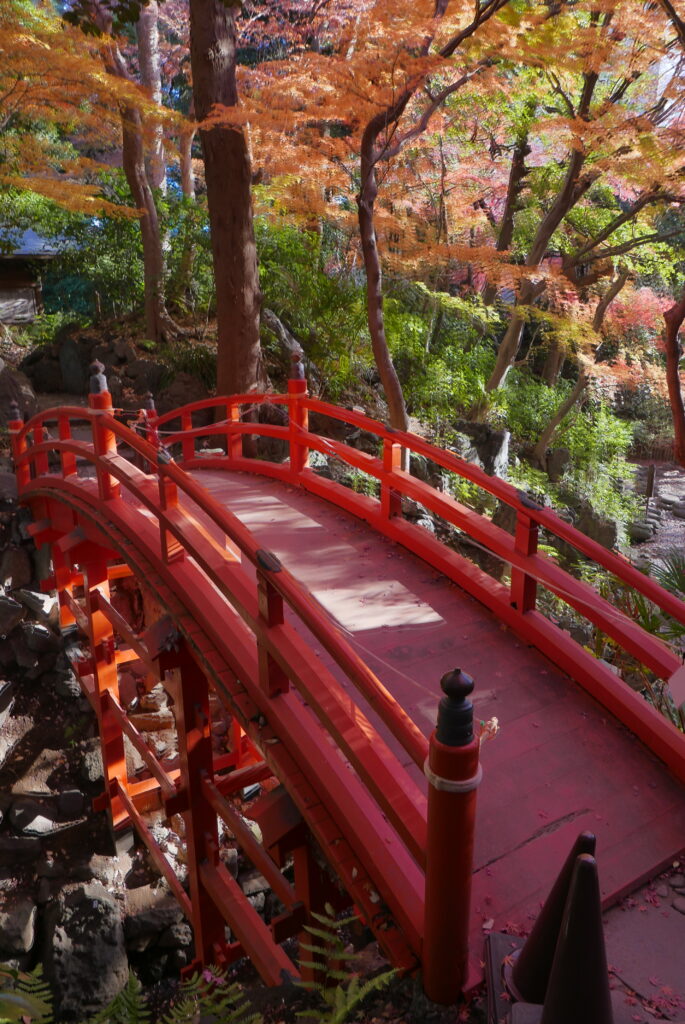
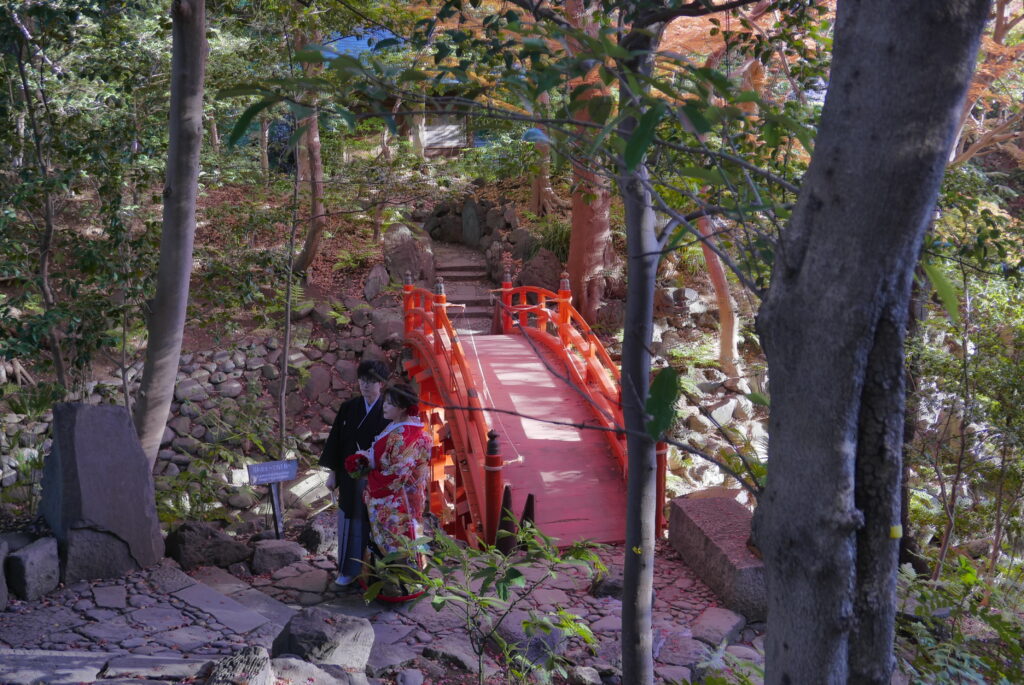
After the Tsu-Ten-Kyo, the Tokujindo stood quietly atop the hill. It is the oldest house in the garden where Tokugawa Mitsukuni (1628 to 1701), the second generation of the Mito Tokugawas, worshipped Boyi and Shuqi, Chinese prince brothers who had prioritized ethical obligations. It was said that he learned more details of their story when he spent months studying ”Records of the Grand Historian of China,” called Shiki in Japanese, to prepare for the debate with Hayashi Dokukosai, a son of Hayashi Razan, a renowned Confucian. Since then, Mitsukuni has respected and followed the fashion of their ways of life.
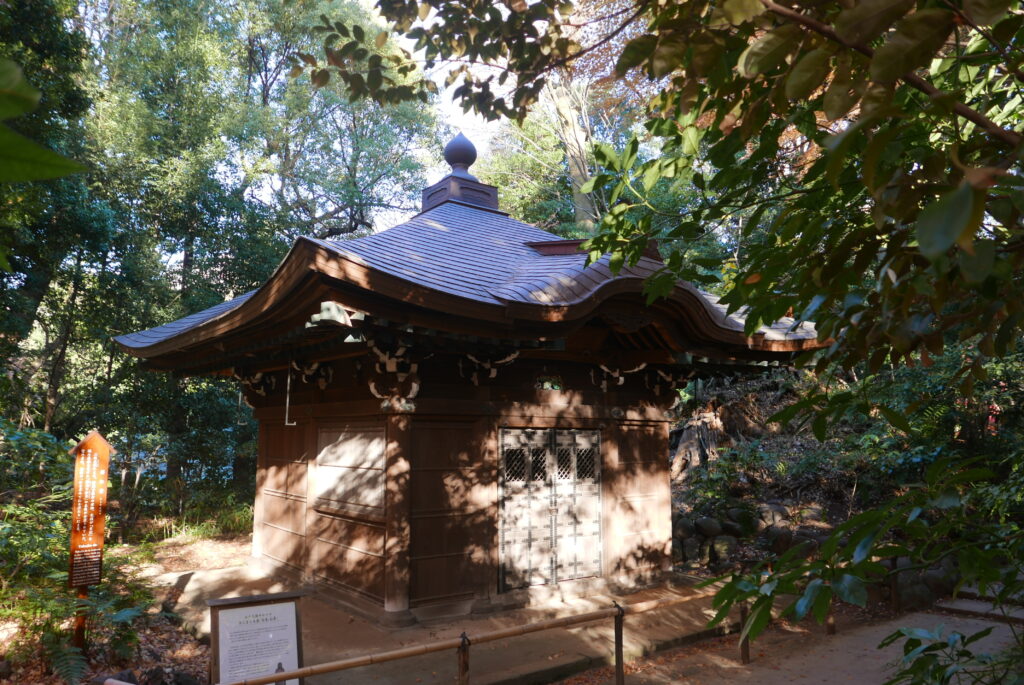
The next characteristic spot was the Engetsukyo Bridge, which literally means “full moon bridge” in Japanese. The bridge’s half circle and reflection on the water’s surface create a full moon, which has a typical Chinese taste. It was said that Zhu Shunshui, Mitsukuni’s mentor, designed it to admire his home country, where he had no choice but to be exiled after the Qing Dynasty conquered it.
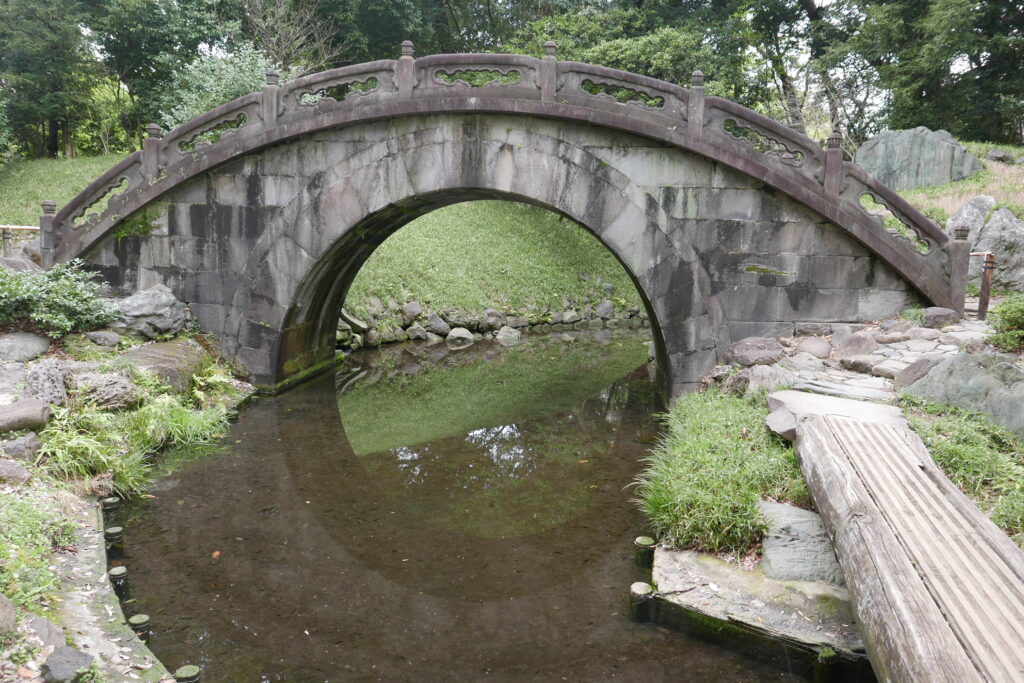
I returned to the pond side and walked on the cobbled pavement called Sawawatari. I liked this spot because it is well designed to express the waterfront and water’s follow-through using stones. Stones are one of the most significant factors in creating traditional Japanese gardens. An expert insisted that Koishikawa-Korakuen became the model of the Daimyo garden, and others followed its concept.
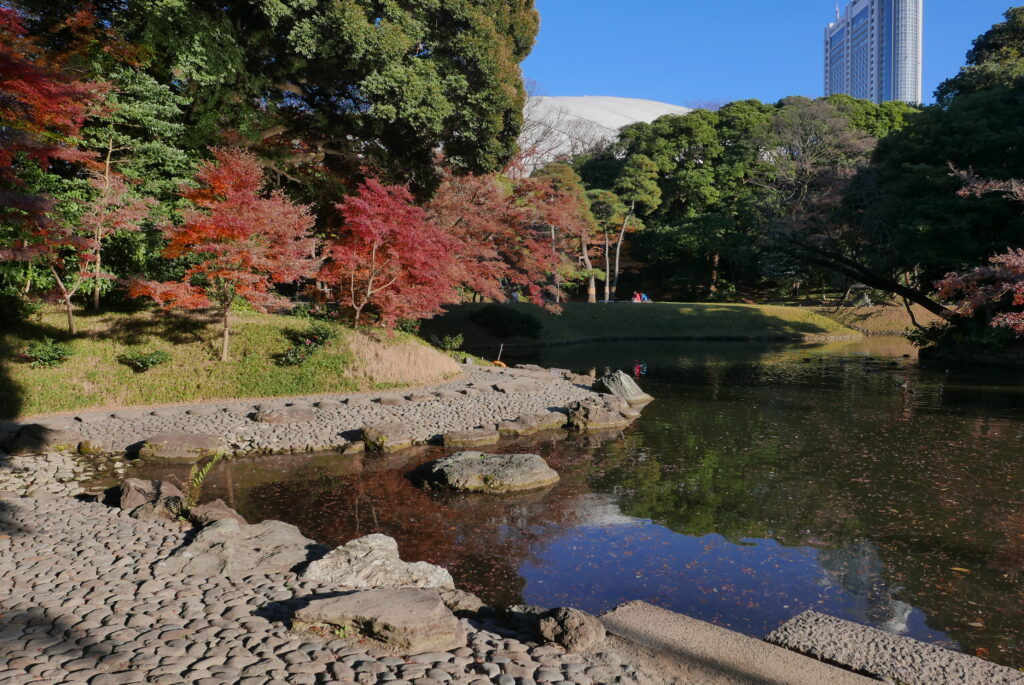
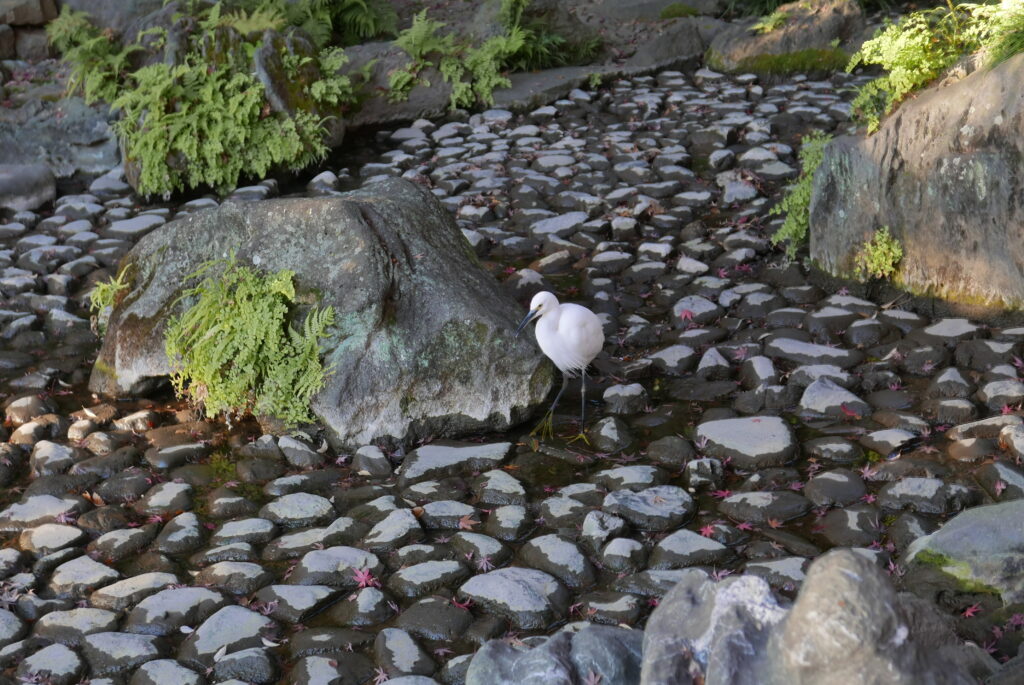
Mitsukuni respected Confucianism and Chinese arts and technology, admired Kyoto as the center of traditional Japanese poems ” Waka,” and cherished farmers and ordinary people. Those all were dedicated to the garden. His respect for agriculture was represented in the rice field in the garden, which he created so that princesses could learn about farm work and how much effort farmers put into raising products. It was said that he encouraged princesses who came to get married to his sons from noble families in Kyoto to experience farming work by their hands.
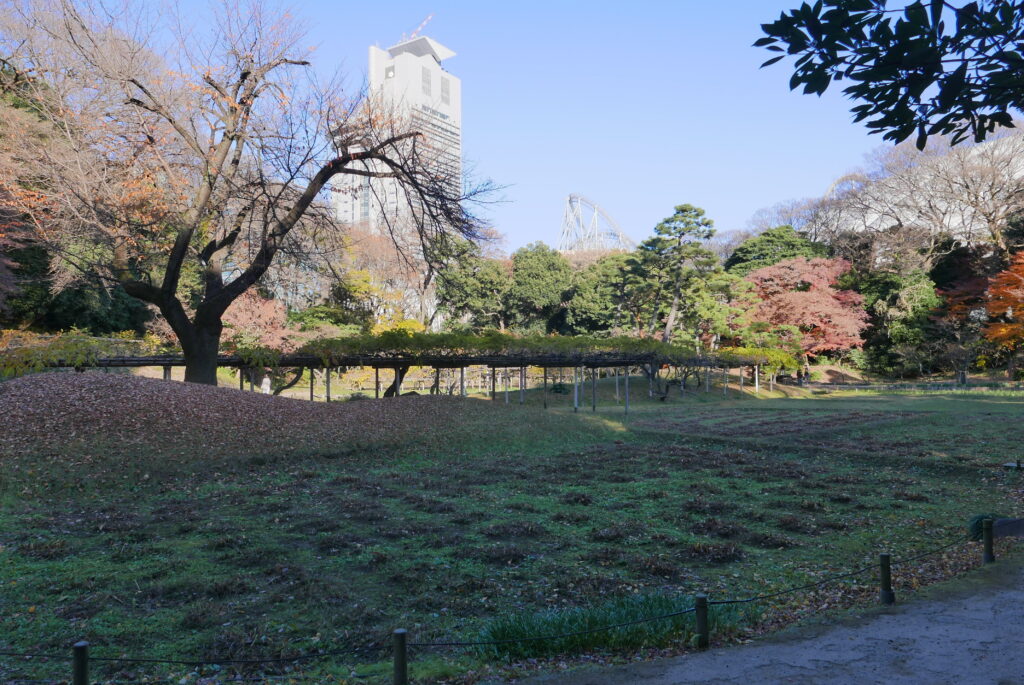
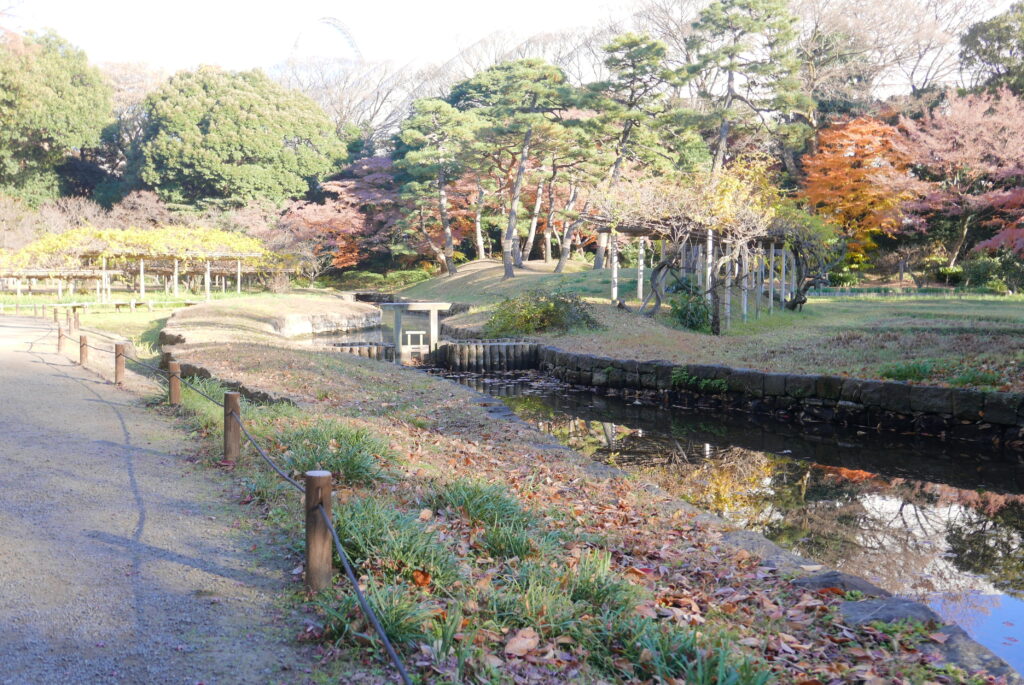
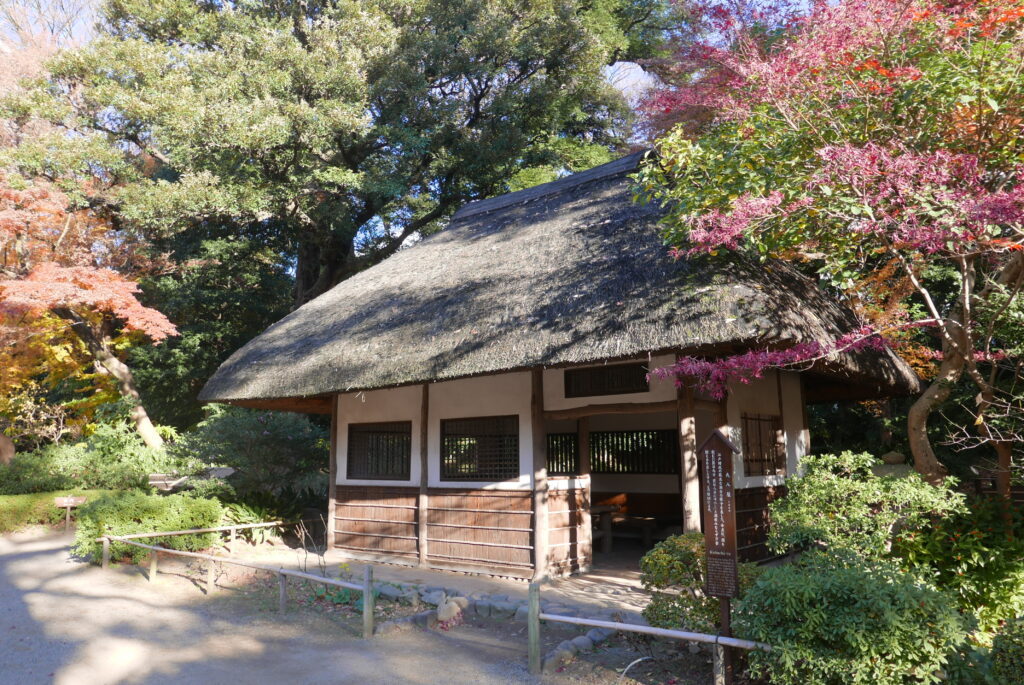
Thank you for reading my post.
If you need an English-speaking guide to explore Tokyo, please click “Contact me!” below. I am willing to help you create an unforgettable private tour. Let’s enjoy the amazing Tokyo with me!
Please also leave your feedback on this post in the comment box at the bottom. I am willing to hear your opinions, requests, and suggestions.
Please visit the following related post.
Please click the links to get updated via my X (former Twitter) and Instagram.
X (former Twitter): https://x.com/ToruGuide
Instagram: https://www.instagram.com/toruhigaki/
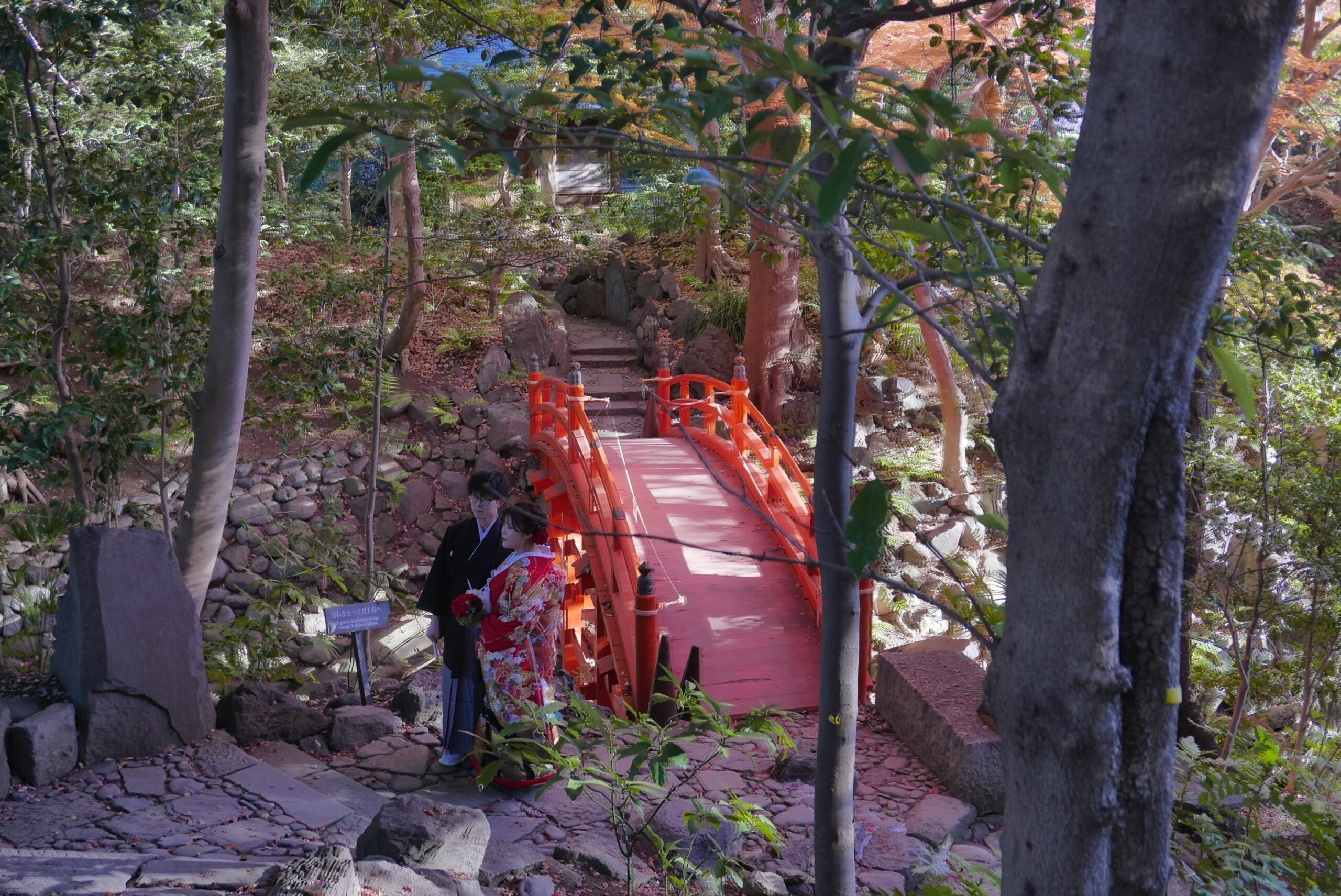



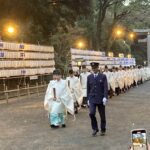
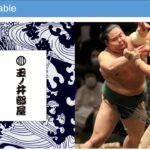
Comment
Hello, I’m interested in visiting the Kyu Shiba Rikyu Garden in Tokyo and would like to inquire about your guided tour services. Could you please provide more information about the garden and its history, as well as your availability and tour rates? Thank you.
Thank you for your comment. I am happy to know that you are interested in Kyu Shiba Rikyu Garden. I would like to email you for more information about the tour and my guiding service. Please use the following URL to send me an email.
https://japan-cultural-traditional-experience.com/contact-form/
I look forward to hearing from you.
thank you – I am resident in Japan and I found your kind information about Korakuen useful for my little book – a story – May you prosper and flourish in your good knowledge and splendid guiding to Japan.
Hi! Thank you for your comment. I am delighted that this post was helpful for your writing work. The Koishikawa-Korakuen Garden is one of my favorite traditional Japanese gardens, and I have written another post about it. Please refer to the following one. https://japan-cultural-traditional-experience.com/a-three-garden-tour-in-tokyo-part-1-koishikawa-korakuen-an-amazing-samurai-lord-style-garden-in-tokyo/